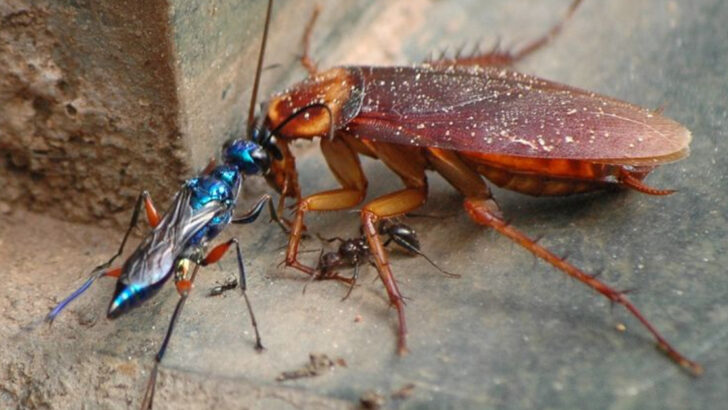The emerald jewel wasp is an extraordinary creature, known for its ability to transform cockroaches into living zombies.
This parasitic wasp displays a captivating survival strategy that has intrigued scientists and nature enthusiasts alike.
Through a series of intricate behaviors and biological marvels, the jewel wasp ensures the continuation of its lineage.
Below, we explore ten fascinating facts about this remarkable insect and its unique parasitic relationship with cockroaches.
The Wasp’s Hypnotic Sting
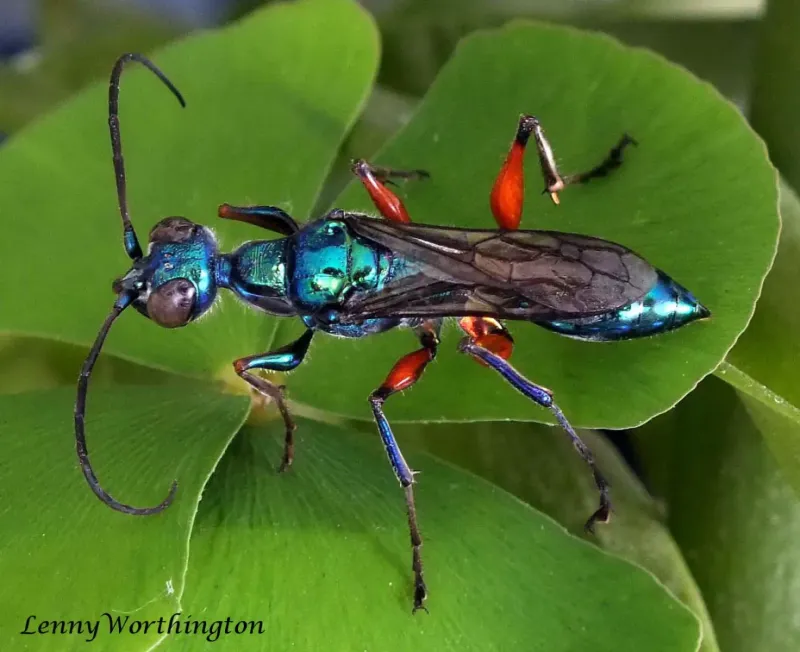
Imagine being able to control another creature with a mere sting. The emerald jewel wasp, a creature of vibrant hues, does exactly that.
By delivering a precise sting to a cockroach’s brain, it turns the host into a compliant zombie. This process involves precise neurotoxic injections that target the motor control of the cockroach, rendering it submissive.
Once stung, the cockroach loses its ability to escape or defend itself. This remarkable control over the cockroach’s nervous system showcases nature’s ingenuity. Did you know? This wasp is often compared to a master puppeteer!
A Nursery Within a Host
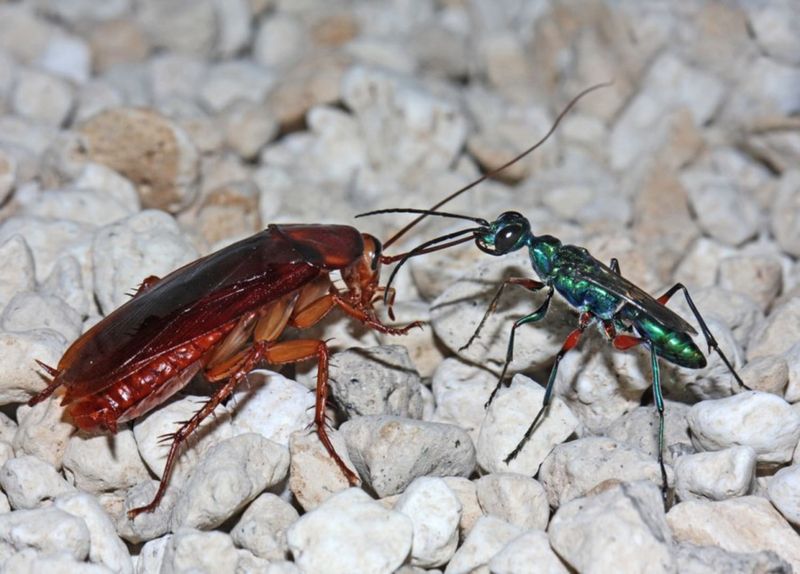
A safe haven for the wasp’s offspring is none other than a cockroach’s body. Once the cockroach is immobilized, the wasp lays a single egg on its abdomen.
This egg serves as the starting point for the next generation’s journey. As the egg hatches, the larva burrows into the cockroach’s body, using its still-living host as nourishment.
This grizzly yet fascinating lifecycle allows the wasp to raise its young within the confines of a living nursery. This biological quirk ensures both protection and sustenance for the developing larva.
Chemical Mind Control
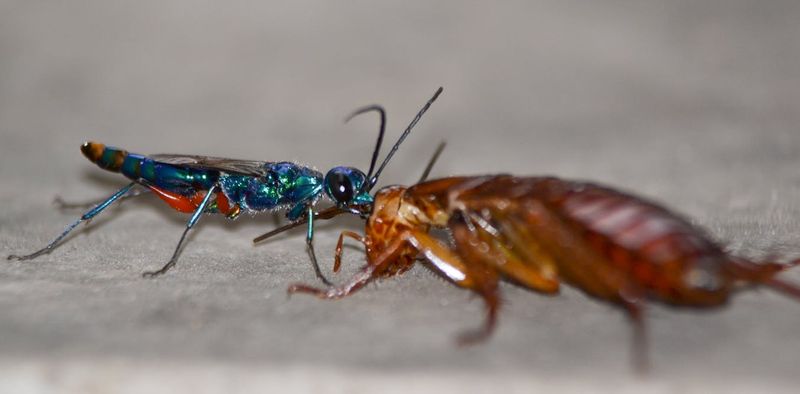
With the precision of a surgeon, the jewel wasp delivers neurotoxins that alter the cockroach’s decision-making abilities.
These chemicals specifically inhibit the cockroach’s escape responses, essentially erasing its will to flee. Interestingly, this mind control is temporary and reversible, lasting just long enough for the wasp to lay its egg.
Researchers have marveled at how such a tiny insect can execute such a complex chemical process. This ability to chemically commandeer another creature’s actions is a testament to the wasp’s evolutionary prowess.
The Perfect Host Selection
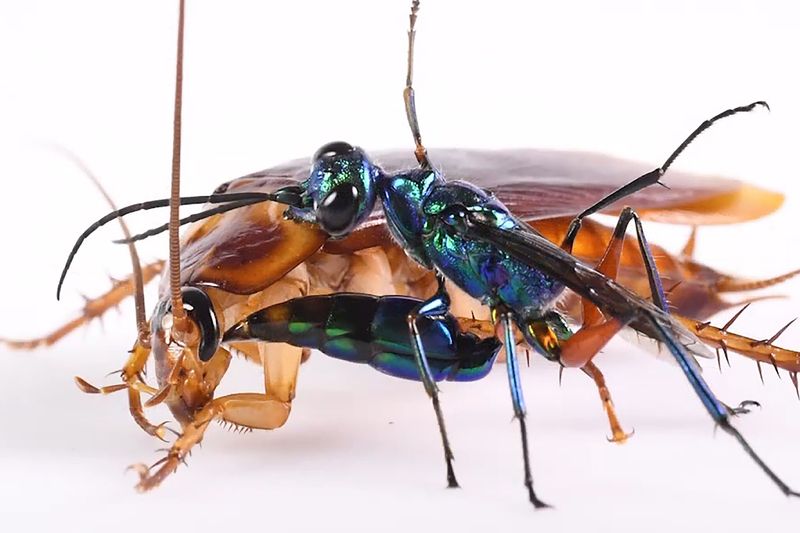
Selecting the right host is crucial for the jewel wasp. It seeks out cockroaches that are not too large or too small, ensuring the optimal environment for its larva.
Once a suitable cockroach is found, the wasp executes its plan with remarkable efficiency. The host’s size and vitality are key factors in this selection process.
This instinctive choice reflects the wasp’s finely-tuned survival strategy, ensuring that its offspring have the best possible chance to thrive. This meticulous selection process is an example of nature’s meticulous attention to detail.
Metamorphosis Inside a Cockroach
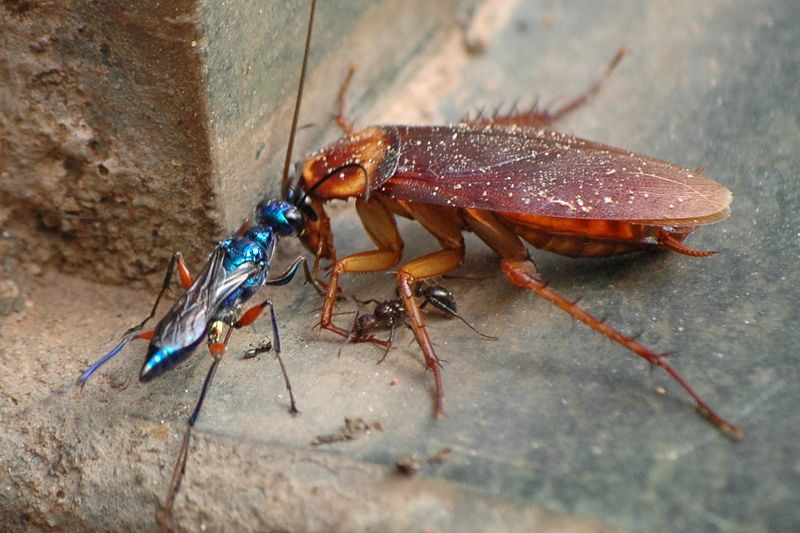
The transformation of a wasp larva within a cockroach is nothing short of miraculous. As the larva consumes the cockroach from the inside, it undergoes its own metamorphosis.
This process, hidden from the outside world, involves the larva growing and developing into a fully formed wasp. The living cockroach provides a continuous supply of nutrients, ensuring uninterrupted growth.
This hidden metamorphosis, tucked away within a host, highlights the extraordinary adaptations found in the natural world. Nature’s ability to conceal such a transformation is truly remarkable.
A Parasitic Survival Strategy
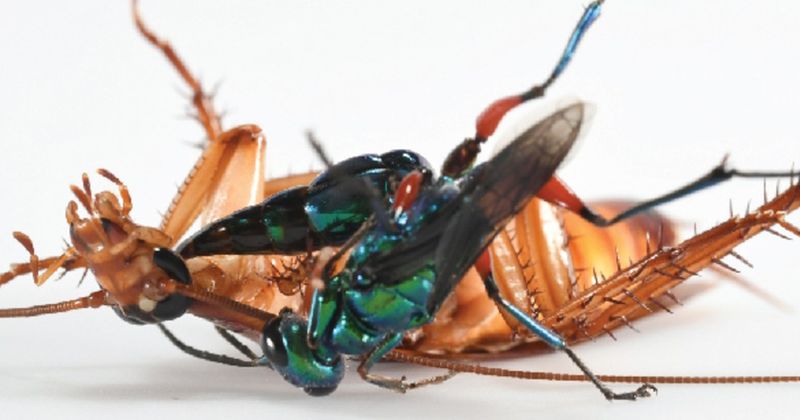
The jewel wasp’s parasitic approach is a masterclass in survival strategy. By converting a cockroach into a living incubator, the wasp ensures its young have a secure and nutrient-rich environment.
This method of reproduction relies heavily on the cockroach’s unwitting cooperation. Over the course of its development, the larva will consume its host from within, leaving nothing but an empty shell.
This gruesome yet effective strategy allows the jewel wasp to thrive in various environments. Its lifecycle exemplifies the darker side of nature’s survival tactics.
The Lifecycle’s Final Act
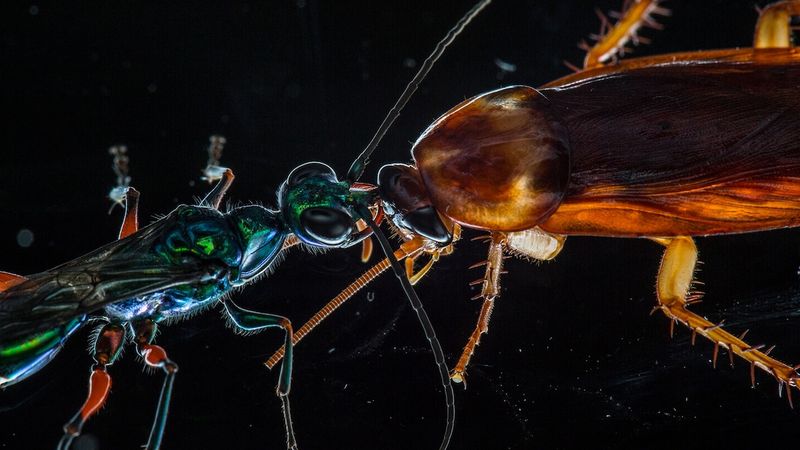
The culmination of the jewel wasp lifecycle is both dramatic and somber. After consuming its host, the fully developed adult wasp emerges from the cockroach carcass.
This emergence marks the end of the larva’s transformation and the beginning of its life as an adult wasp. The empty shell left behind is a testament to the wasp’s intricate lifecycle and its dependence on its cockroach host.
This final act of emergence signifies a new chapter in the wasp’s existence, ready to perpetuate the parasitic cycle anew.
Jewel Wasp’s Geographic Range
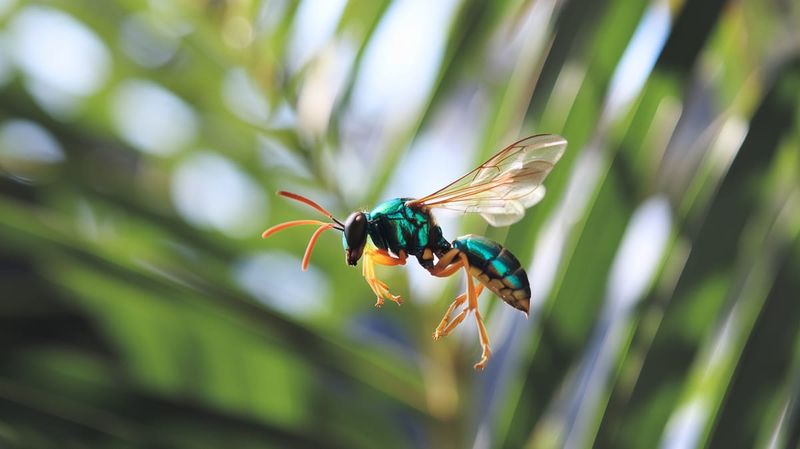
The jewel wasp is primarily found in tropical regions, thriving in warm, humid environments. Its geographical range includes parts of Africa, Asia, and the Pacific islands.
These regions provide the ideal conditions for the wasp’s lifecycle, with abundant cockroach populations serving as potential hosts. The wasp’s ability to adapt to various tropical climates showcases its resilience and versatility.
This widespread distribution ensures that the jewel wasp remains a fascinating subject of study for entomologists and ecologists alike, highlighting the diverse habitats it occupies.
Intricate Behavioral Adaptations
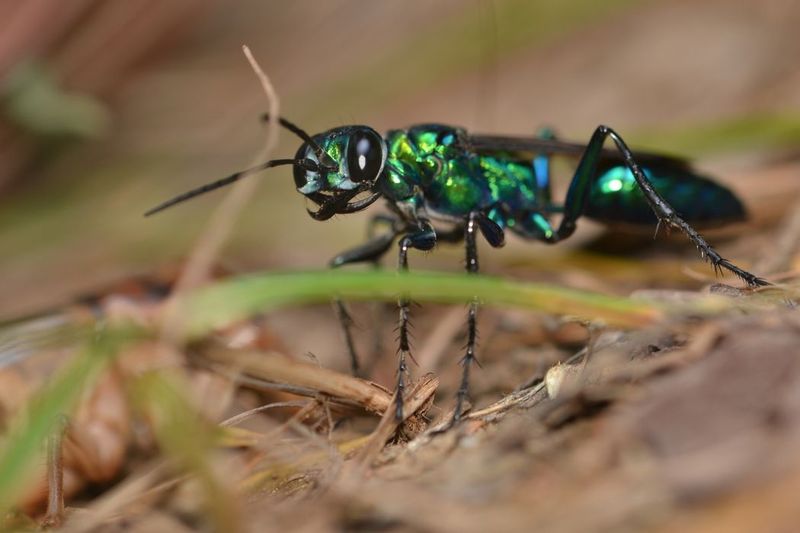
The behavior of the jewel wasp is a testament to evolutionary ingenuity. Each step in its parasitic process is executed with precision, from subduing the cockroach to laying its egg.
These behaviors are not only complex but also highly specialized, developed over countless generations. Observing the wasp’s actions offers insight into the intricate dance of survival and adaptation.
This behavioral sophistication is a marvel of nature, demonstrating how even the smallest creatures can develop remarkable survival strategies. The jewel wasp continues to intrigue and inspire with its cunning.
The Wasp’s Role in Ecosystems
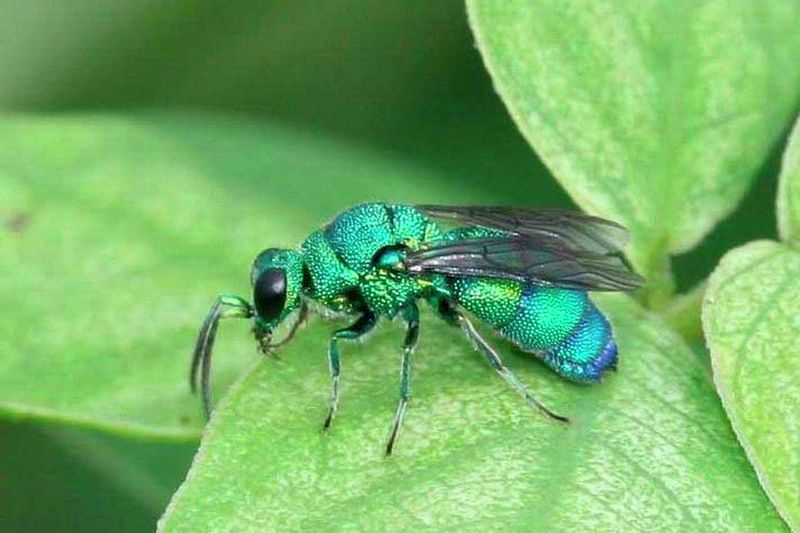
Despite its gruesome reproductive methods, the jewel wasp plays a vital role in controlling cockroach populations.
By keeping cockroach numbers in check, it contributes to the ecological balance in its habitat. This natural regulation prevents cockroach overpopulation, which can have negative impacts on the environment.
The wasp’s presence is a reminder of the interconnectedness of ecosystems and the role each species plays. This delicate balance underscores the importance of every organism, no matter how small, in maintaining ecological harmony.

